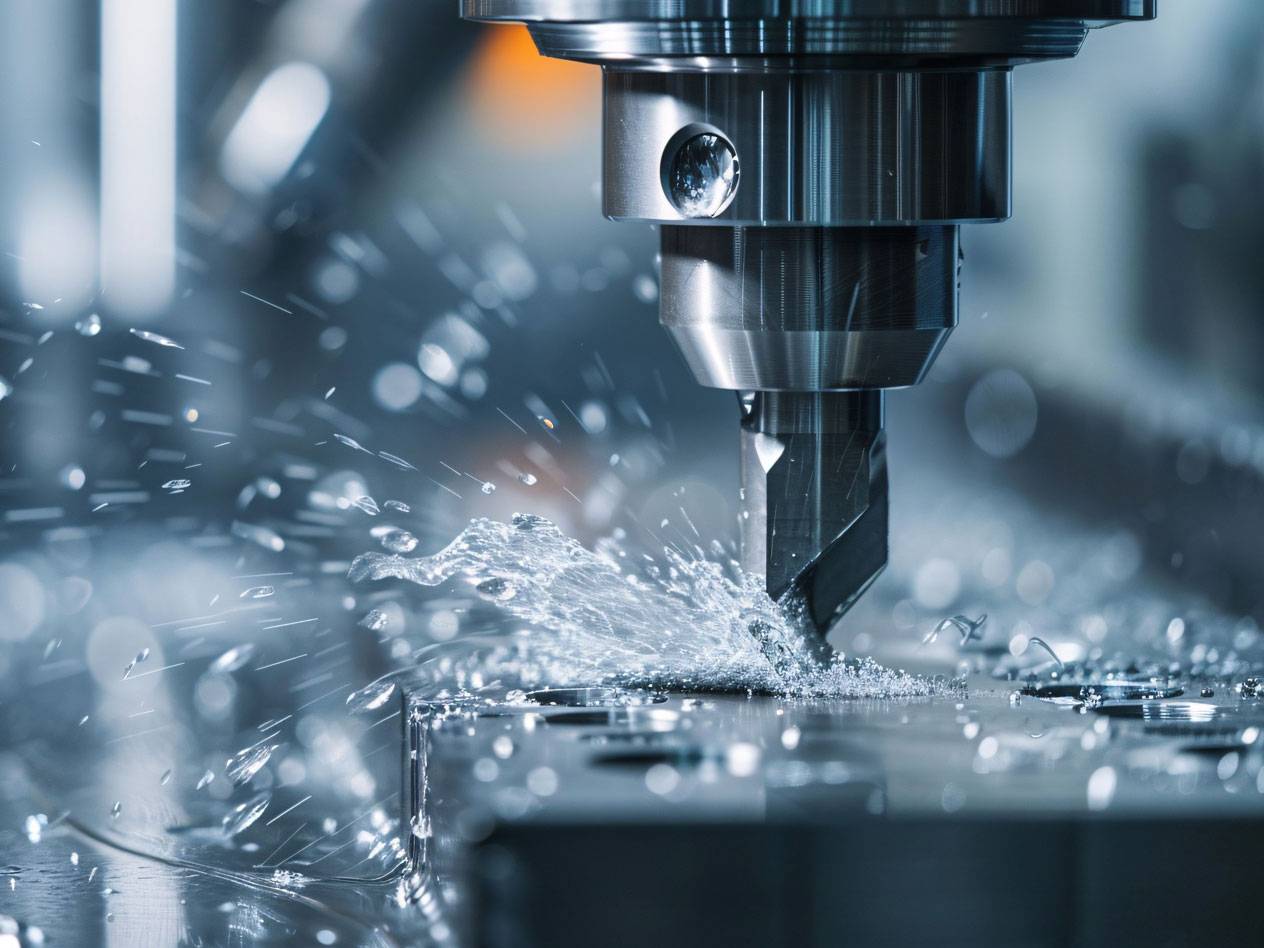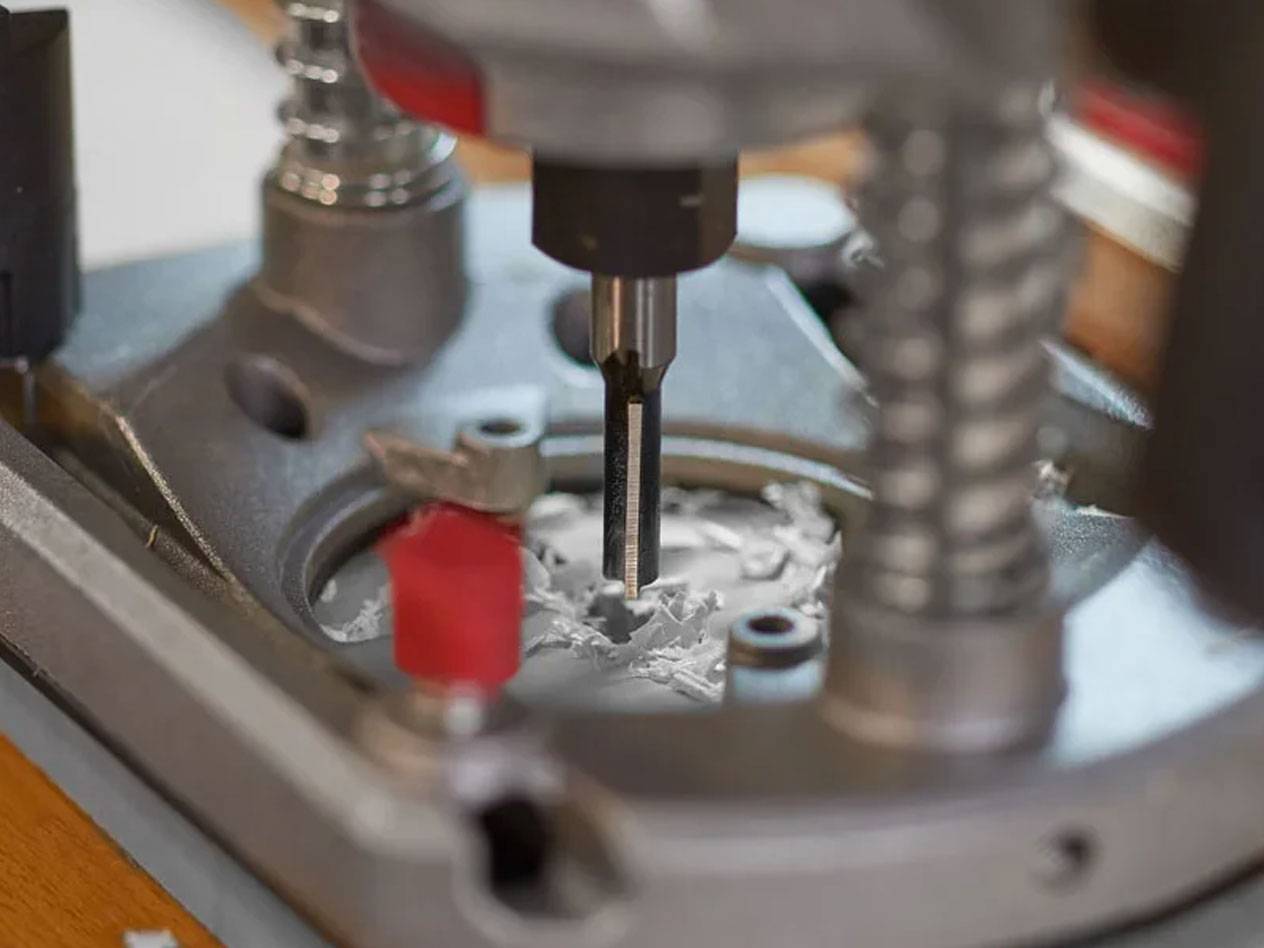Milling
Milling is a versatile working method that can be used to create a variety of profiles. This guide explains what you should pay attention to when milling and where the benefits lie in a particularly clear and beginner-friendly way.
In the following articles, you'll also learn how to get by without a milling machine using a drill and what you need to consider when performing various milling tasks, such as milling a groove. This ensures a professional result even for beginners!
The added value of milling
Milling involves removing material from a workpiece in the form of chips. This creates a profile for various applications. For example, patterns and lettering can be milled into the base material. The main application, however, is the creation of material connections: These include guide rails, T-joints, rebates, holes, and much more. They can be used to firmly join individual parts together by inserting a second workpiece into the appropriately milled recess. This connection can also be glued or screwed.
Milling processes and functions
Milling methods are primarily used for the construction of furniture. The following list provides an overview of common procedures, functions, and device characteristics.
Common Milling Methods
There are various milling methods, each with its own specialized equipment. The most versatile router is the router. It can be guided very flexibly over the material with various attachments to create the desired recesses.
The device can also be mounted underneath a panel to create a milling table. This eliminates the need to guide the tool over the material; instead, the material itself is moved over the router. This is particularly advantageous for small workpieces. Even grooves can also be machined into flat materials using an electric planer.
Wood is primarily milled. While other materials such as metals and plastics can also be machined, they usually require special equipment such as a CNC milling machine. However, due to the high purchase price and complex operation, this solution is only recommended for very few DIY enthusiasts.
For masonry, there are special wall chasers that can be used to cut guide channels for laying electrical cables or heating pipes, for example. This tool is very useful for larger renovation projects and major refurbishments.

That’s why up-cut milling is better
Close-up of the direction indicator on a router, symbolized by an arrow. When routing, you should always work against the direction of travel of the tool. This is usually indicated by an arrow on the tool. While it is also possible to down-cut, the workpiece is much more difficult to stabilize. In the worst case, the material can even be thrown off course. This poses a risk of injury.
Importance of cutting speed
Cutting speed is often cited as a selection criterion for milling machines and is calculated from the feed rate, speed, cutter diameter, and the number pi. However, it only becomes important when the shortest machining times and high yield are required, such as in industrial mass production. There are complex tables for this that optimize productivity and material wear under high loads.
For private use, cutting speed is irrelevant and unnecessarily complicated to calculate. The feed rate can be controlled, but it's difficult to quantify. Harder materials, for example, can be milled more slowly because they offer more resistance. An exception is plastic: this should be milled as quickly as possible, otherwise the material will melt.

The correct speed when milling
The right speed for milling is different from the feed rate. When milling, unlike sawing, the rule for most woods is: go full throttle! Too low speeds result in strong friction on the material and don't remove the material reliably. This increases the temperature so dramatically that unsightly heat marks and charred cutting edges can occur. Therefore, it's generally advisable to work at higher speeds rather than lower ones.
For plastics, the opposite is true. Here, you work with the lowest possible speed setting and, above all, pay attention to using a particularly sharp milling cutter. This cutter should have no more than two cutting edges to ensure sufficient space for chip removal. This effectively prevents heated chips from sticking together.
Tip
A cooling lubricant can also be used for metal and plastic. It reduces heat build-up and improves chip removal. It also creates less dust, as it is bound in the lubricant.
Conclusion
Milling is a versatile machining method that can be used to create profiles in all kinds of shapes. While many materials can be machined with a milling machine, wood is the most popular because:
- Metal requires expensive equipment such as a CNC milling machine. However, this investment is rarely worthwhile for home use.
- Low-strength materials crack easily and are therefore unsuitable.
- Plastics require speed control on the milling machine used. The use of coolant may also be advisable.
For milling various types of wood, the router, in particular, offers a seemingly endless number of applications and facilitates, for example, the construction of furniture and countless design projects. A wall chaser is worthwhile when laying cables and pipes as part of masonry renovation work.

